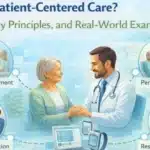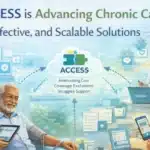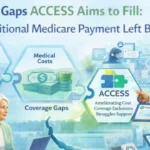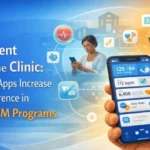Remote Patient Monitoring ROI in 2026: Costs, Benefits & Is It Worth It?
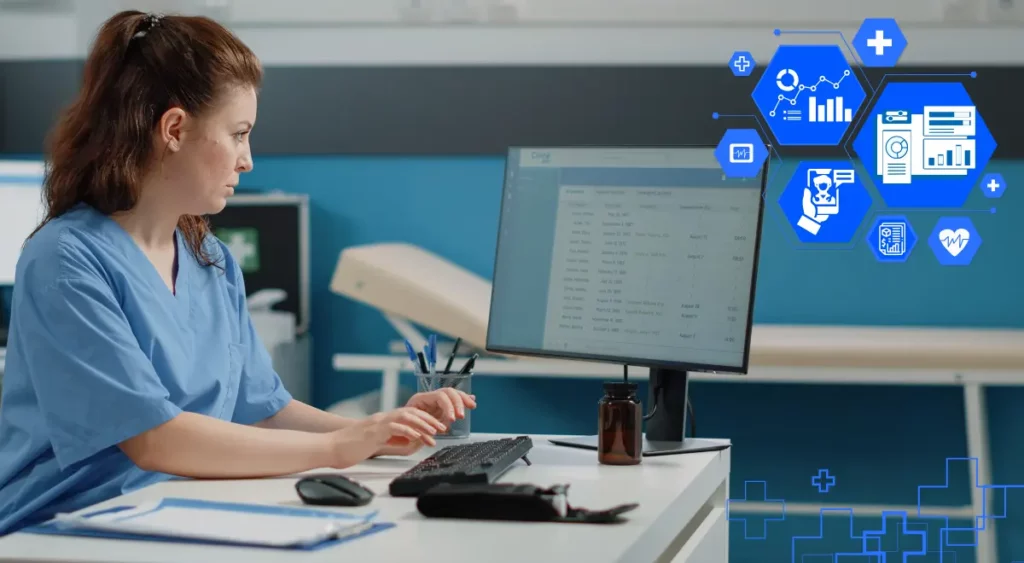
With a giant sweep taking place in the digital transformation of at-home healthcare, Remote Patient Monitoring (RPM), Remote Therapeutic Monitoring (RTM), Chronic Care Management (CCM), Transitional Care Management (TCM), Principal Care Management (PCM), Medication Therapy Management (MTM), Advanced Primary Care Management (APCM), and Telehealth Solutions are playing a significant role in the care delivery model. All of these programs are focused on ensuring continuous patient engagement, early intervention in the treatment plan, and data-informed care for effective and long lasting results.
Providers are moving to digital health solutions, not only because of regulatory compliance or meeting their patients’ needs, but also to improve clinical workflow, patient outcomes, and financial performance.
As organizations invest in digital health solutions, the demand for clear return-on-investment (ROI) metrics continues to grow. From hospitals to clinics and private practices, healthcare providers are actively evaluating how these technologies improve care quality while also delivering measurable financial returns. The value of digital health is increasingly evident—driving outcomes like reduced hospital readmissions and enhanced monthly reimbursements through CMS-approved billing CPT codes aligned with value-based care.
Table of Contents
ToggleWhat is ROI in Digital Health?
Return on Investment (ROI) in digital health reflects the total value, clinically, operationally, and financially from the use of healthcare technologies. ROI includes not only the decline in dollars saved or earned, but also clinical improvements for patient outcomes, improved efficiencies of workflows, improved staff productivity, improved regulatory compliance, and even improvements to the health of individual patients. Examples of common approaches to measuring the ROI of digital health platform may include:
- Cost savings, secondary to fewer emergency room visits and hospital readmissions.
- Further savings in clinician time by automating administrative responsibilities.
- More revenue as a result of billable services (like RPM, CCM, or TCM)
- Improvements in engagement and adherence by patients
- Patients maintain confidence about contact with their clinician (lower levels of anxiety)
Though it may seem simple to quantify the ROI of digital health solutions, it is not always easy to do in practice, particularly in clinical environments. Several variables complicate ROI calculation, including challenges in maintaining patient engagement, inconsistent adoption of digital platforms, legacy issues with EHR integration, variability in billing operations, and complexities surrounding billing and coding.Clinical ROI means outcomes like fewer complications/ diagnoses, including reduced risk of hospitalizations and readmissions, improvements in medication adherence, timely medication interventions.
- Operational ROI is measured in differences in operational efficiencies.
- Financial ROI focuses on the timing of billing reimbursements/collections and profit margin increases.
Latest ROI for Common Digital Remote Care Programs
1. ROI for Remote Patient Monitoring (RPM)
Remote Patient Monitoring (RPM) is a way for healthcare providers to collect real-time data on patient vitals such as blood pressure, blood glucose levels, weight, and oxygen saturation levels. The immediate feedback allows for timely interventions that can prevent hospitalizations and emergency room interventions.
-
- Estimated Monthly Revenue per Patient: $120–$150.
- Annual Revenue (100 Patients): $144,000–$180,000
- Time to ROI Break-even: 2–3 months after implementation
- Typical ROI: 3x–5x return on technology and staffing investment.
- Key ROI Drivers: CPT 99453, 99454, 99457, 99458 reimbursements; reduced ER visits by 30–50%; earlier intervention in chronic care
Financial ROI: Out of all the digital health services available, RPM is one of the most profitable, with several viable, reimbursed CPT codes available through CMS (99453, 99454, 99457, 99458). Providers can receive compensation of $120+ per patient per month, opening unlimited revenue potential. A practice managing 100 RPM patients can generate over $140,000 in annual revenue—without requiring additional physical infrastructure or staffing resources.
Clinical ROI: RPM improves the management of chronic diseases (hypertension, diabetes, congestive heart failure). The sooner patients can identify anomalies; the sooner providers can take steps to intervene and mitigate the severe outcomes. A survey demonstrated that RPM prevents hospital readmissions by 76% in chronic populations.
Operational ROI: The tracking of vitals is automated, and providers can efficiently manage care coordination. Providers obtain asynchronous monitoring for RPM patients and can more effectively prioritize the patients that need urgent care. Digital dashboards and alerts and allow a nurse or care coordinator to monitor dozens of patients.
2. ROI for Chronic Care Management (CCM)
Chronic Care Management (CCM) means you have a patient with two or more chronic conditions likely to last for at least twelve months. Chronic care management provides for ongoing coordination of patient care in the setting of two or more chronic health conditions, medication management, and patient communication and engagement between face-to-face visits.
-
- Estimated Monthly Revenue per Patient: $60–$85.
- Annual Revenue (200 Patients): $144,000–$204,000
- Time to ROI Break-even: Within 2 months for practices with dedicated care coordinators
- Typical ROI: 4x–7x return on technology and staffing investment.
- Key ROI Drivers: CPT 99490, 99439; fewer hospitalizations; improved medication adherence; stronger MIPS scores
Financial ROI: The Centers for Medicare & Medicaid Services (CMS) allow providers to bill CPT code 99490 for 20 minutes of care coordination per patient/client each month. The reimbursement rate per patient ranges from $62 to $132 depending on the complexity of care and time spent managing the care coordination. If you manage 200 patients, that is over $150,000 additional revenue each year.
Clinical ROI: CCM have a measurable ROI when it comes to improving health outcomes. Offering monthly check-ins, medication management reviews, and early identification of health deteriorations allow for a prompt response to care. Data collected by CMS demonstrates that CCM lowers hospitalizations in more than 75% of Medicare beneficiaries and improves medication adherence.
Operational ROI: Utilizing a digital platform to support CCM processes reduces administrative burden, automates the scheduling of appointments, documentation for visits, and communications with patients.
3. ROI for Transitional Care Management (TCM)
Transitional Care Management (TCM) facilitates transitions from inpatient hospital settings to home, with a particular focus on the first 30 days after discharge. TCM encompasses medication reconciliation, care coordination, and follow-up care in the post-discharge stage.
-
- Estimated Reimbursement per Transition (per patient): $180–$250.
- Annual Revenue (50 TCM encounters/month): $108,000–$150,000
- Typical ROI: 3x–4x return on technology and staffing investment.
- Key ROI Drivers: CPT 99495, 99496; reduced 30-day readmissions by up to 48%; improved follow-up compliance.
Financial ROI: For TCM services, the Centers for Medicare and Medicaid Services (CMS) have formulated CPT codes 99495 and 99496. Providers can earn up to $232 per patient for each transition of care managed—a significant revenue opportunity for hospitals and practices with high discharge volumes.
Clinical ROI: Post-discharge complications are a major driver of hospital readmissions. Transitional Care Management (TCM) plays a critical role in minimizing these risks by enhancing care continuity, reducing errors, and improving patient engagement in their recovery. Studies show that effective TCM can reduce readmission rates by nearly 50%.
Operational ROI: Digital solutions automate post-discharge follow-up appointments, reminders, and documentation. This helps avoid manual tasks and mitigate the chances that patients lose their way. Care teams can put their focus on where they are needed most.
4. ROI for Remote Therapeutic Monitoring (RTM)
Remote Therapeutic Monitoring (RTM) provides information that is not related to physiological data – which includes pain levels, physical activity, medication management, and therapy engagement. It is particularly valuable in behavioral health and musculoskeletal care.
-
- Estimated Monthly Revenue per Patient: $50–$70
- Annual Revenue (100 Patients): $60,000–$84,000
- Typical ROI: 2x–3x, increasing as adoption scales.
- Key ROI Drivers: CPT 98975, 98976, 98977, 98980, 98981; ideal for MSK, respiratory, mental health tracking
Financial ROI: There are CMS codes 98975 to 98978 for RTM billing. These codes provide both the physician and non-physician provider (i.e., therapist) with the opportunity to generate revenue of up to $150 per patient, per month. RTM is a value-add for clinics that offer rehabilitation services covering behavioral health, and/or medication or drug management of patients, respectively.
Clinical ROI: RTM increases adherence to the treatment plan and allows for visibility of patient recovery outside of the clinic. It allows the clinician to recognize under-stressed patients who are at risk of regression, or patients who may need to alter their therapy plan due to their recovery progress.
Operational ROI: Digital RTM platforms reduce the number of in-person appointments, when possible. They automate the check-in process, provide subjective metrics, and enhance the objective metrics to develop documentation for reimbursement. The provider can manage a larger caseload while having better visibility to the patients’ recovery in real time.
5. ROI for Principal Care Management (PCM)
Principal Care Management (PCM) is a care coordination service for patients who have one serious chronic condition. It is a targeted intervention model designed for high-risk populations.
-
- Estimated Monthly Revenue per Patient: $90–$100.
- Annual Revenue (100 Patients): $108,000–$120,000
- Typical ROI: 3x–5x return on technology and staffing investment.
- Key ROI Drivers: CPT 99424, 99425, 99426, 99427; optimized for single chronic condition patients; improved continuity of care.
Financial ROI: CPT code 99424-99427 provides reimbursement for monthly PCM services. Providers will receive $60-90 monthly per patient for PCM services. PCM can also incorporate both RPM and RTM for increased reimbursement. .
Clinical ROI: Focused management for one chronic condition such as COPD, asthma and heart failure will stabilize care outcomes. Providers can enhance stabilization of conditions when they concentrate resources on one issue.
Operational ROI: Due to the fewer patient touchpoints, PCM is easier to implement and manage as it requires fewer patient interactions than CCM. Automated tracking, alerts, and messaging help care teams engage with a higher total number of patients in a streamlined fashion with less effort.
6. ROI for Medication Therapy Management (MTM)
Medication Therapy Management (MTM) is an approach, led by a pharmacist, to make sure patients take the right medications with the right doses and at the right times.
-
- Estimated Monthly Revenue per Patient: $30–$60.
- Annual Revenue Potential: $50,000–$100,000 based on patient panel size.
- Typical ROI: 2x–3x, especially when combined with CCM or RPM
- Key ROI Drivers: Fewer adverse drug events; improved clinical outcomes in polypharmacy patients; improved Part D star ratings.
Financial ROI: MTM services may be reimbursed through Medicare Part D or private insurance. Practices that collaborate with pharmacy providers or leverage digital MTM tools are often eligible for incentives and may be able to bill directly for these services.
Clinical ROI: MTM services reduce medication errors, avoid adverse drug reactions, and improve adherence overall. It is especially useful for treating seniors and polypharmacy patients.
Operational ROI
Digital Medication Therapy Management (MTM) enhances efficiency through streamlined medication reviews, real-time alert systems, and automated documentation of errors and events. This leads to increased productivity and improved collaboration between providers, pharmacists, and technology platforms.The Key ROI Drivers for Digital Health Platforms
There are multiple factors that will influence your ROI in a digital health platform. Here are some drivers of ROI and ways in which health systems can increase the value of their investment into remote care software, applications, and technology.
- CMS Usage and Reimbursement: There are many reimbursement opportunities for services like RPM, CCM, RTM, and TCM via Medicare and many private insurers. Being able to take advantage of these billing codes represents a new revenue stream. Practices that optimize billing and documentation processes can significantly increase monthly revenue with minimal additional overhead.
- Efficiency and Workflows: Digital platforms can make workflows more efficient by offering scheduling, documentation, patient communication, engagement, compliance reminders, and tracking. Since majority of manual tasks are automated, there are lesser chances of burnout and errors, and more time available for face-to-face patientcare. Efficient workflows allow healthcare providers to support more patients without increasing headcount.
- Patient Outcomes and Engagement : Patients who are engaged round the clock have better outcomes with lower costs associated with healthcare delivery. Digital tools, such as cellular medical devices, promote adherence to medications, adherence to better follow up visits, and beneficial lifestyle changes through consistent engagement.
- Fewer Hospitalizations and Readmissions: Platforms like RPM and TCM facilitate monitoring of patients post discharge or between visits. This results in early detection of decline in a patient’s condition and enables action before things escalate into emergencies. Identifying issues before they become expensive emergency room visits and readmissions reduces costs for both the provider and payer.
- Improved Care Coordination: Digital care coordination platforms improve coordination by ensuring that every member of the care team, including physicians, nurses, specialists, and pharmacists are aware of the treatment the patient has received. Improved communication reduces the risk for duplication of services, medication interactions, and delay in care.
- Expandability/ Scalability: Digital platforms have enabled providers to increase the number of patients they can care for with fewer staff. With the right tools, a nurse or care manager can support hundreds of patients. Additionally, providers can expect to increase both quality and reduce costs.
ROI Measurement Framework to Depict Actual Performance
Healthcare providers must adopt a multi-dimensional approach that defines clinical, operational, and financial performance to accurately assess ROI that involves assessing:
- Baseline Metrics
- Platform Functionality to Goals
- Direct Financial Impact
- Time Savings and Labor Efficiency
- Patient Health Outcomes
- Continuous Evaluation
It is helpful to define current metrics such as hospitalization rates, appointment no-show rates, patient satisfaction scores, and time spent with each patient to measure performance over time. All digital health platforms offer different capabilities. It is important to map features on the platform to the specific goals of reducing readmissions, improving revenue, or managing chronic disease.
The revenue generated from CMS billing codes is an effective way to determine direct monetary impact. You should factor in the total cost of operating the platform (subscription, training support) and assess it against new revenue generated under the billing codes. Break-even analyses can help you predict ROI within a period.
Time savings from automated scheduling, professional notes, and automatic patient messaging represents labor cost savings. Additionally, clinicians that are not engaged in clinical activities (i.e., administrative tasks) can manage a higher patient roster.
How to Maximize ROI on Your Digital Health Software Investment
Healthcare organizations can readily achieve better ROI results when they factor strategic implementation, staff training, and patient engagement into their rollout.
Step 1: Choose an All-in-One Platform
Selecting a platform offering RPM, CCM, TCM, RTM, and MTM, allows organizations to mitigate tech silos, lowering the overall cost of licensing. An all-in-one tech solution is easier to manage and facilitates continuity when accessing data.
Step 2: Invest in Staff Training
Even with the best tech, it is worthless if you are not using it properly. Train all users (physicians, nurses, and billing staff) on the platform functions. Appoint digital champions to drive platform integration, ownership, and usage.
Step 3: Prioritize High-risk Patients
Focus on patients who are at higher risk. RPM and CCM deliver best ROI in patients with chronic conditions or those with recent hospitalization.
Step 4: Automate and Define Workflows
Define common care paths and create protocols/ templates/ automation triggers. This will support more consistency and significantly reduce time spent on repetitively low-level tasks.
Step 5: Monitor Performance and Adapt
Make use of analytics dashboards and monitor usage and outcomes. Review performance metrics regularly and adjust processes and/or patient panels as appropriate.
Step 6: Engage the Patients
Ensure higher patient participation by using in-app tutorials, regular check-ins, and follow-up support. Better patient engagement leads to better data quality and improved outcomes.
Conclusion: Investing in Remote Care Software is a Future-Oriented Investment
Digital health platforms or remote care software are not an experiment anymore; they are a demonstrated solution for enhancing quality of care, as well as providing financial returns. Out of the available RPM, CCM, RTM, and TCM, these technologies ensure providers engage in initiative-taking, scalable, patient-centered care.
Health systems can decrease expenses, increase revenue, and drive satisfaction for both patients and staff when they align technology to their practice or existing Electronic Health Record (EHR). Driving ROI requires careful consideration of implementation, setting clear objectives, and evaluating practices and outcomes as you go along.
How HealthArc Helps Achieve ROI Goals
HealthArc is at the forefront of digital health innovation, providing an integrated, end-to-end care management platform to assist healthcare providers with better patient outcomes and maximize financial reimbursements. Developed to meet the demands of value-based care, HealthArc takes the complexity out of remote monitoring and billing.
With RPM, RTM, CCM, TCM, MTM, APCM and PCM, the care management services offered by HealthArc provides practices the opportunity to generate additional revenue while advancing patient care.
- Financial Impact: HealthArc automates billing, creates accurate CPT codes, and optimizes billing for practicesPractices using HealthArc can onboard patients 40–60% faster and experience a 25–35% increase in successful claims.
- Clinical Impact: HealthArc integrates directly into EHRs, providing real time data and patient monitoring. Clinicians and care teams receive actionable data feedback, allowing for early intervention and chronic disease prevention.
- Operational Impact: We save clinicians time with easy-to-use dashboards, task automation, and coordination tools that allow multi-provider coverage. HealthArc allows practices to scale efficiently without increasing costs.
Frequently Asked Questions (FAQs)
ROI, or Return on Investment, assesses the clinical, operational, and economic value that a health system accrues from implementing digital health technologies such as Remote Patient Monitoring (RPM), Chronic Care Management (CCM), and Transitional Care Management (TCM). ROI encompasses revenue capture, cost reduction, operational efficiencies, and clinical value in the form of improved patient health and disease management outcomes.
RPM is projected to yield revenue of between $120 and $150 per patient per month (PPPM). RPM is projected to break even at 2–3 months. RPM practices managing 100 patients can earn an annual revenue of $144,000–180,000 and often achieve a 3x–5x ROI.
RPM CPT codes 99453, 99454, 99457, and 99458, as well as the patient’s and technician’s interactions with the devices, are associated with the setting up of the devices, monitoring, and patient interactions.
RPM, CCM, and TCM are believed to yield the strongest ROI owing to high reimbursement rates, lower readmissions, and better patient participation and satisfaction. CCM often achieves 4x–7x ROI, and TCM results in a reduction of 30-day readmissions of up to 48%.
These programs lower costs through real-time remote patient monitoring, proactive patient management, and thorough medical necessity care coordination, which reduce ER visits and hospital readmissions.
Absolutely. Automation and streamlined workflows enable even small practices to scale patient care without a commensurate increase in staffing and tap into CMS reimbursements.
ROI is assessed through a combination of revenue and expense evaluation (billing revenue vs. costs), operational efficiency (time saved), and clinical benchmarks (reduced complications, improved adherence).
Depending on the program used, most practices achieve ROI within 2–3 months of implementation, particularly when concentrating on high-risk and chronic care patients.
The use of an all-in-one remote care platform, comprehensive staff training, patient engagement systems, automated workflows, continuous performance evaluation, and refinement sharply drive ROI.
HealthArc automates RPM, CCM, TCM, RTM, MTM, APCM, and PCM and provides an integrated platform that streamlines care coordination, automates billing, and improves patient onboarding and reimbursement rates by 40–60%.
RPM is most effective for conditions like hypertension, diabetes, COPD, and heart failure—read more here: Which Chronic Conditions Can RPM Monitor Effectively?.
Do you want to implement a digital health program at your practice? We provide practices with all the tools, support, and compliance they need to easily implement and sustain a high ROI in all aspects of digital healthcare. Schedule a demo now to see how our platform works.
Most Recent Blogs
Categories
Related Blog
- November 26, 2025 | Read Time: 14 mins
Return on Investment (ROI) of Remote Patient Monitoring (RPM): A Complete Guide for ACOs and Healthcare Organizations
The U.S. healthcare system continues its transition from fee-for-service models to value-based...
Learn More- November 24, 2025 | Read Time: 15 mins
Common RPM Pricing Models for Providers: A Profitability-Focused Guide
Remote Patient Monitoring (RPM) has rapidly emerged as one of the leading...
Learn More- October 23, 2025 | Read Time: 12 mins
How RPM Devices Improve Hypertension and Diabetes Outcomes in Medicare Populations
Remote patient monitoring (RPM) is transforming chronic care for Medicare beneficiaries. CMS...
Learn More